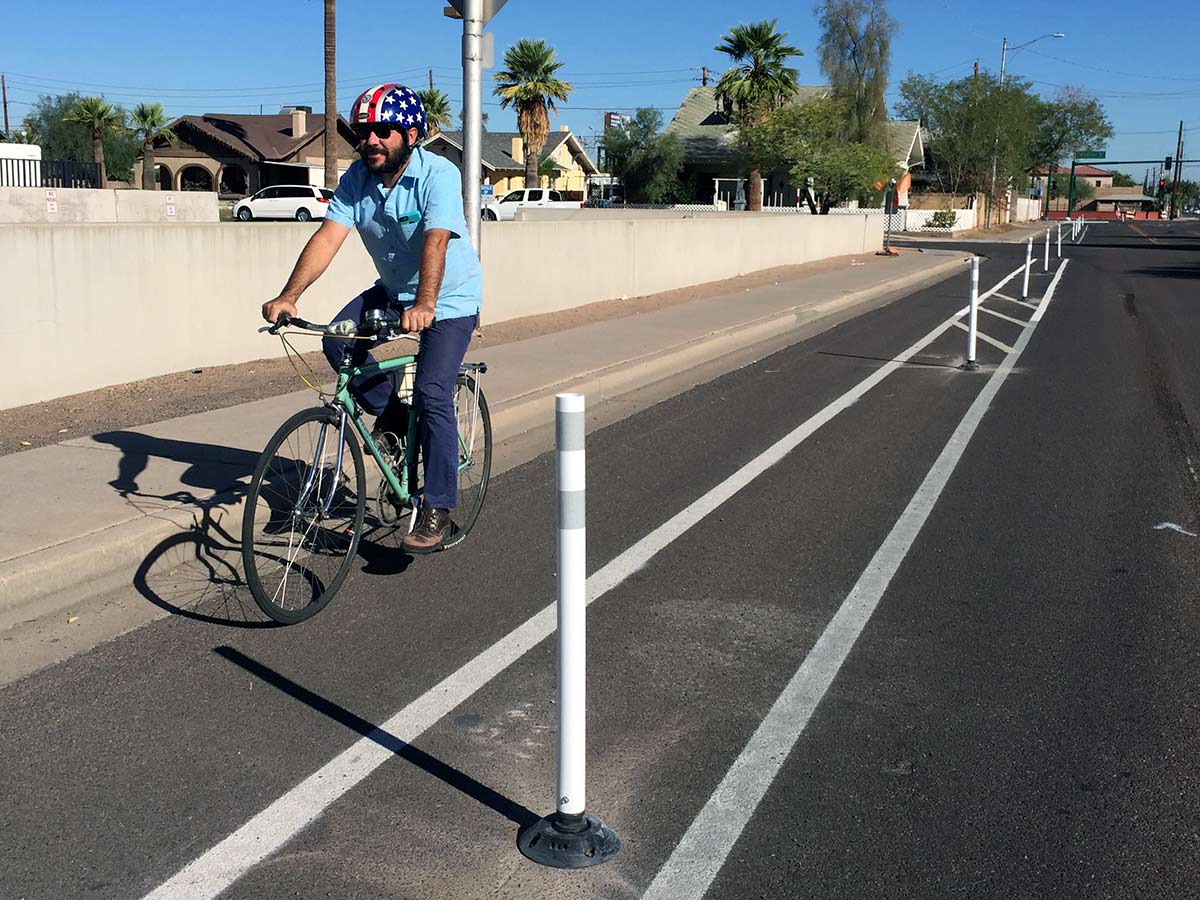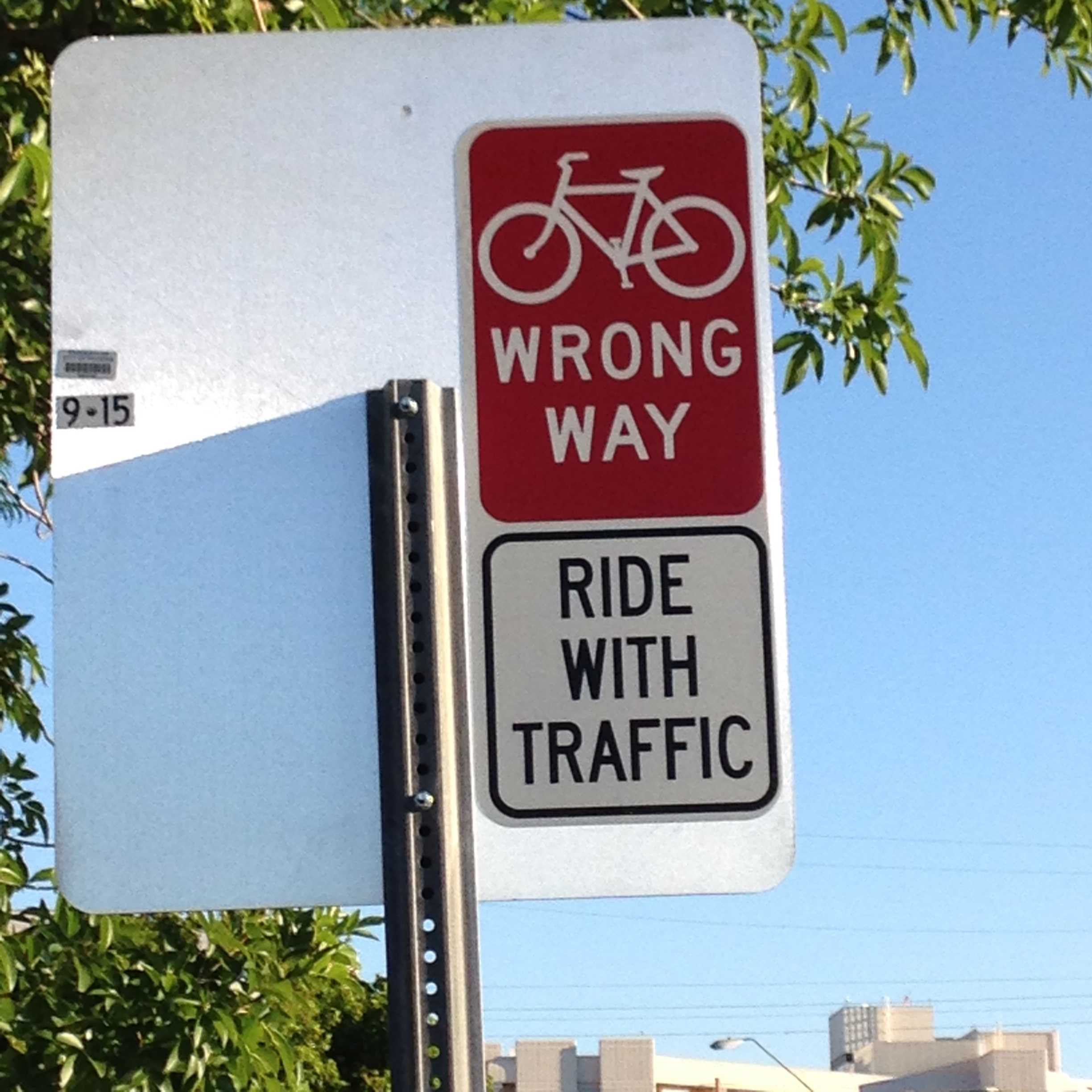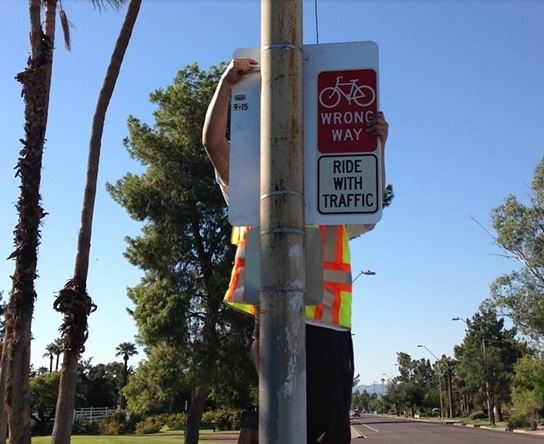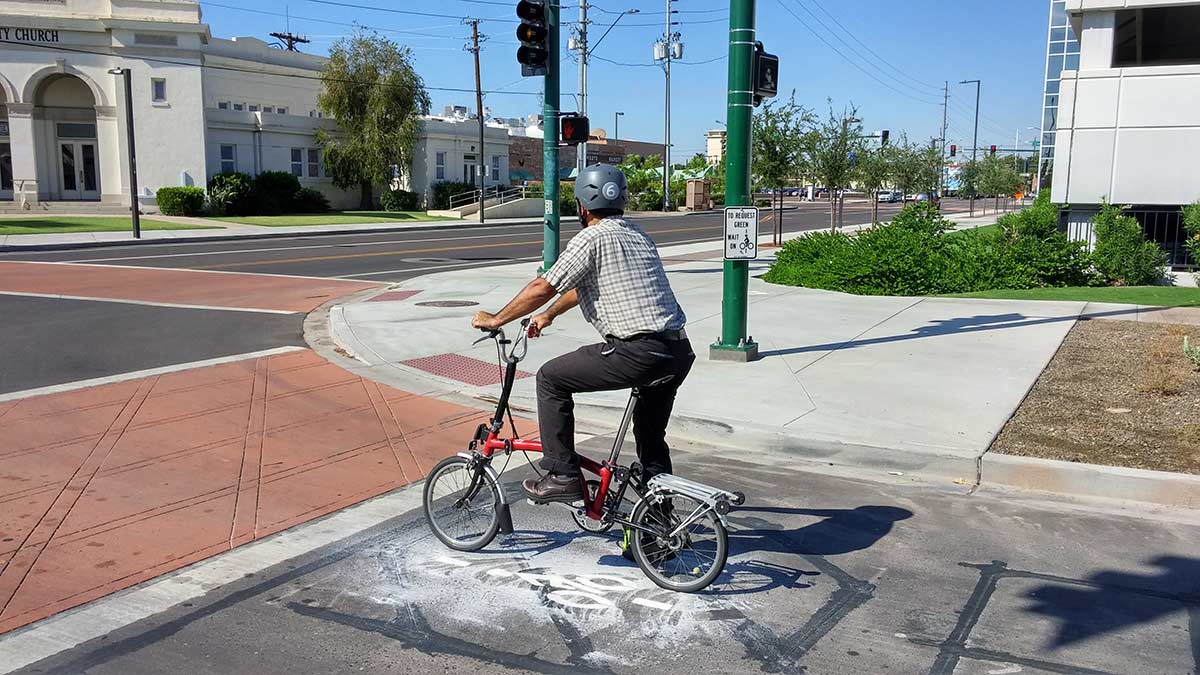The Street Transportation Department is continuously exploring opportunities to help make Phoenix a more bicycle-friendly city. Listed below are some examples of the various key initiatives we are carrying out to improve the city's bicycling infrastructure.
Protected Bike Lanes Now Open for Use - October 2017
 |
|
The City's first protected bike lanes were recently installed on 15th Avenue between Van Buren and Jefferson streets. The new protected bike lanes feature a painted buffer zone with flexible bollards that give bicyclists more protection while clearly signaling to drivers the potential presence of bike traffic. The bollards will also help discourage vehicles from illegally parking in bike lanes. The City also added green paint spot treatments to the new bike lanes to help increase visibility and identify areas where bicycle and car traffic might mix. The Street Transportation Department will continue to assess new and existing bike lanes and additional mechanisms for creating separation between cars and bikes to establish a network of protected bicycle lanes.
Green Spot Treatments for Bike Lanes - April 2017
With bright green paint on hand, crews from the Street Transportation Department are painting key locations on bike lanes green. Crews are using green paint that stands out to increase the overall visibility of the bike lanes and make bicycling in Phoenix safer. Check out some of the paint test demonstrations that crews completed this morning.
12th Street (Camelback Road to Mountain View Road) - March 2016
If you’ve driven 12th Street in central Phoenix lately, you might have noticed something different near the major intersections between Camelback and Mountain View roads. Along this stretch of 12th Street where there used to be two vehicle lanes at the signal, there’s now only one. As part of an ongoing effort to reduce conflicts between bicyclists and turning motorists, the bike lanes were recently extended to the signaled intersections and the auxiliary lanes at the major intersections were removed to create a dedicated lane for bikes and buses only. Similar improvements will continue to be made along other corridors.
Phoenix Gets Its First Bike Traffic Signal - August 2016
The Street Transportation has installed the city’s first bike traffic signal at the intersection of 12th Street and Campbell Avenue. The new bike traffic signal features a Leading Bicycle Interval (LBI) to give bicyclists the head start of a few seconds before other vehicles move in the same direction after given a green light. Similar to the Leading Pedestrian Intervals that have been implemented at busy intersections in downtown Phoenix, the LBI works to decrease the danger risks between bicyclists and turning traffic while providing more opportunities for bike-riders to change lanes or turn left. The LBI uses a three-step stoplight process that is only triggered after a bicycle approaches the intersection and waits in the bike lane. This method is currently used in other large bicycle-friendly cities such as Washington, D.C. and Portland, Ore. The test is being conducted in partnership with Northern Arizona State University. Based on the results of the test, Phoenix will consider future opportunities for the use of this technology.
Phoenix Installs New Street Signs to Discourage Bicyclists From Riding Against Traffic - September 2015
 |  | | |
The Street Transportation Department is installing new street signs along popular bicycling corridors, in downtown Phoenix, to discourage bicyclists from riding against traffic. As a safe practice and per state law bicyclists should ride with traffic, not against traffic. Bicyclists that ride against traffic put themselves, and those around them, in harm’s way and are less likely to be seen by motorists. In Phoenix, between 2009 and 2013, nearly 33 percent of bicycle crashes involved wrong-way riders. Similar to the same type of signage that is used in other cities, the new signs include a WRONG WAY warning message on a red background and are positioned to be seen by bicyclists that are wrongfully riding against traffic. Additional new signs will continue to be installed throughout designated bike lanes.
Bicycle Detection at Signalized Intersections – June 2013
 |  | |
The Street Transportation Department is embedding detection devices in the pavement at signalized intersections to detect bicycles waiting for a green light. The detection devices are triggered when bicyclists stop on the bicycle detector pavement marking. Without these devices, bicyclists and motorcyclists are left sitting at red lights through multiple cycles of the lights, unable to trigger a green light for their signal. Detection of bicyclists at signalized intersections can improve efficiency, decrease delay to bicyclists, and discourage red light running bicyclists without causing inordinate delays to motorists.
